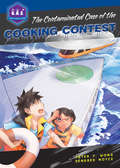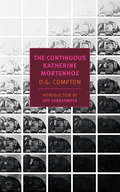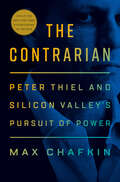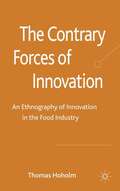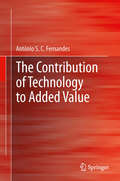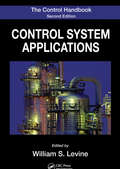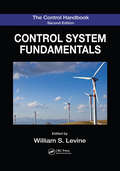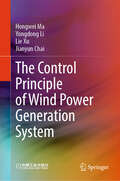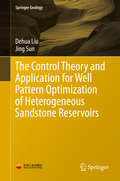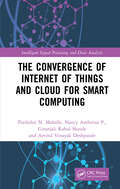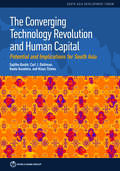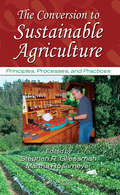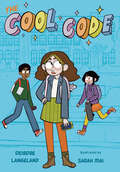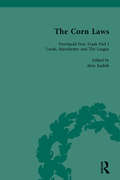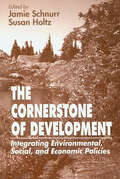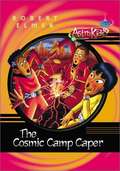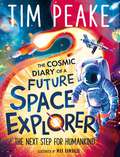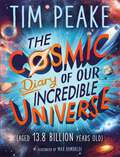- Table View
- List View
The Construction of Houses
by Derek Worthing Duncan Marshall Roger Heath Nigel DannThe fifth edition of this successful textbook is aimed specifically at those students and practitioners who require a broad understanding of building construction as part of a wider sphere of professional activity. The book provides a comprehensive introduction to the principles and practice of modern construction and services. New to this edition are: Hundreds of revised graphics to complement the fully updated text New illustrations and photos printed in full colour for the first time New chapters on sustainability, ventilation and windows. This highly sought after text concentrates on principles and practice rather than details and regulations and retains it’s easy to follow format and highly accessible style. In doing so it enables the reader to demonstrate a comprehensive and genuine understanding of modern house construction and its evolution over the last 100 years. The Construction of Houses is not only an essential read for students, surveyors, developers and planning professionals, but also the interested lay person considering their first building project.
The Contaminated Case of Cooking Contest
by Peter WongWith time travel and mysteries that need solving, the Galactic Academy of Science (G.A.S.) series instructs readers on how to think like scientists. Under the guidance of a Dude or Dudette from the future, the middle school characters are faced with treacherous, present-day crimes that require a historical knowledge of science in order to be solved. From investigating problems to analyzing data and constructing explanations and solutions, this series blends elements of sci-fi with educational methods that distill the key thinking habits of scientists and engineers. The science of food safety combines with mystery in this G.A.S. adventure about an outbreak of foodborne illness When a cruise featuring a cooking contest turns into a disaster of vomiting passengers, seventh-grade G.A.S. trainees Mae and Clinton have a mystery to solve. With help from Selectra Volt, Dudette from the future, the two kids travel through time to learn about the science of food safety. Between journeys to the past, they investigate clues aboard ship. But when a storm comes, and conditions aboard the disabled ship become desperate, can Mae and Clinton discover the cause of the outbreak in time?
The Continuous Katherine Mortenhoe
by D. G. Compton Jeff VandermeerKatherine Mortenhoe lives in a near future very similar to the present day. Only in her time, dying from anything but old age is unheard of; death has been cured. So when Katherine is diagnosed with a terminal brain disease brought on by an inability to process an ever increasing volume of sensory input, she immediately becomes a celebrity to the "pain-starved public." But Katherine rejects her tragic role: She will not agree to be the star of a Human Destiny TV show, her last days will not be documented or broadcast. What she doesn't realize is that from the moment of diagnosis she's been watched, not only by television producers but by a new kind of program host, a man with a camera behind his unsleeping eyes.Like Margaret Atwood's MaddAddam trilogy, Kazuo Ishiguro's Never Let Me Go, and the television series Black Mirror, The Continuous Katherine Mortenhoe is a thrilling psychological drama that is as wise about human nature as it is about the nature of technology.
The Contrarian: Peter Thiel and Silicon Valley's Pursuit of Power
by Max ChafkinA biography of venture capitalist and entrepreneur Peter Thiel, the enigmatic, controversial, and hugely influential power broker who sits at the dynamic intersection of tech, business, and politics &“Max Chafkin&’s The Contrarian is much more than a consistently shocking biography of Peter Thiel, the most important investor in tech and a key supporter of the Donald Trump presidency. It&’s also a disturbing history of Silicon Valley that will make you reconsider the ideological foundations of America&’s relentless engine of creative destruction.&”—Brad Stone, author of The Everything Store and Amazon UnboundSince the days of the dot-com bubble in the late 1990s, no industry has made a greater impact on the world than Silicon Valley. And few individuals have done more to shape Silicon Valley than Peter Thiel. The billionaire venture capitalist and entrepreneur has been a behind-the-scenes operator influencing countless aspects of our contemporary way of life, from the technologies we use every day to the delicate power balance between Silicon Valley, Wall Street, and Washington. But despite his power and the ubiquity of his projects, no public figure is quite so mysterious.In the first major biography of Thiel, Max Chafkin traces the trajectory of the innovator's singular life and worldview, from his upbringing as the child of immigrant parents and years at Stanford as a burgeoning conservative thought leader to his founding of PayPal and Palantir, early investment in Facebook and SpaceX, and relationships with fellow tech titans Mark Zuckerberg, Elon Musk, and Eric Schmidt. The Contrarian illuminates the extent to which Thiel has sought to export his values to the corridors of power beyond Silicon Valley, including funding the lawsuit that destroyed the blog Gawker and strenuously backing far-right political candidates, notably Donald Trump for president in 2016. Eye-opening and deeply reported, The Contrarian is a revelatory biography of a one-of-a-kind leader and an incisive portrait of a tech industry whose explosive growth and power is both thrilling and fraught with controversy.
The Contrary Forces of Innovation
by Thomas HoholmThe complexity and tensions of industrial innovation processes are fleshed out through the analysis of an intriguing case study from the food industry. Drawing together insights from multiple disciplines, this book shows the controversial nature of innovation processes.
The Contribution of Technology to Added Value
by António S.C FernandesThere is a wide consensus that introduction of technology to the production process contributes to an overall economic value, however, confusion between technology, knowledge and capital often makes value calculations ambiguous and non-objective. The Contribution of Technology to Added Value addresses not only this issue of definition but also provides a production model to assess the value contribution of technology within the production process. A clarification of fundamental semantics provides a significant taxonomy for technology dependence, and allows understanding and modeling of how knowledge, technology and capital individually contribute to production and to value adding. A new technology dependence taxonomy is proposed and assessed following chapters explaining growth models, the KTC model and technology index values. Balancing theoretical knowledge with real-world data and applications The Contribution of Technology to Added Value clarifies the issue of value adding for a range of different viewpoints and purposes; from academic to industry and service across engineering, economics and management.
The Control Handbook: Control System Applications, Second Edition (The Electrical Engineering Handbook)
by William S. LevineAt publication, The Control Handbook immediately became the definitive resource that engineers working with modern control systems required. Among its many accolades, that first edition was cited by the AAP as the Best Engineering Handbook of 1996. Now, 15 years later, William Levine has once again compiled the most comprehensive and authoritative resource on control engineering. He has fully reorganized the text to reflect the technical advances achieved since the last edition and has expanded its contents to include the multidisciplinary perspective that is making control engineering a critical component in so many fields.Now expanded from one to three volumes, The Control Handbook, Second Edition organizes cutting-edge contributions from more than 200 leading experts. The second volume, Control System Applications, includes 35 entirely new applications organized by subject area. Covering the design and use of control systems, this volume includes applications for: Automobiles, including PEM fuel cells Aerospace Industrial control of machines and processes Biomedical uses, including robotic surgery and drug discovery and development Electronics and communication networks Other applications are included in a section that reflects the multidisciplinary nature of control system work. These include applications for the construction of financial portfolios, earthquake response control for civil structures, quantum estimation and control, and the modeling and control of air conditioning and refrigeration systems.As with the first edition, the new edition not only stands as a record of accomplishment in control engineering but provides researchers with the means to make further advances. Progressively organized, the other two volumes in the set include: Control System Fundamentals Control System Advanced Methods
The Control Handbook: Control System Fundamentals, Second Edition (Electrical Engineering Handbook)
by William S. LevineAt publication, The Control Handbook immediately became the definitive resource that engineers working with modern control systems required. Among its many accolades, that first edition was cited by the AAP as the Best Engineering Handbook of 1996. Now, 15 years later, William Levine has once again compiled the most comprehensive and authoritative resource on control engineering. He has fully reorganized the text to reflect the technical advances achieved since the last edition and has expanded its contents to include the multidisciplinary perspective that is making control engineering a critical component in so many fields. Now expanded from one to three volumes, The Control Handbook, Second Edition brilliantly organizes cutting-edge contributions from more than 200 leading experts representing every corner of the globe. The first volume, Control System Fundamentals, offers an overview for those new to the field but is also of great value to those across any number of fields whose work is reliant on but not exclusively dedicated to control systems. Covering mathematical fundamentals, defining principles, and basic system approaches, this volume: Details essential background, including transforms and complex variables Includes mathematical and graphical models used for dynamical systems Covers analysis and design methods and stability testing for continuous-time systems Delves into digital control and discrete-time systems, including real-time software for implementing feedback control and programmable controllers Analyzes design methods for nonlinear systems As with the first edition, the new edition not only stands as a record of accomplishment in control engineering but provides researchers with the means to make further advances. Progressively organized, the other two volumes in the set include: Control System Applications Control System Advanced Methods
The Control Principle of Wind Power Generation System
by Hongwei Ma Yongdong Li Lie Xu Jianyun ChaiThe book focuses on wind power generation systems. The control strategies have been addressed not only on ideal grid conditions but also on non-ideal grid conditions, which are more common in practice, such as kinds of asymmetrical grid conditions and weak grid conditions. This is achieved by providing in-depth study on a number of major topics such as mathematical models, modeling methods, dynamic characteristics on ideal grid condition and non-ideal grid conditions, advanced control strategies, and novel topologies. The comprehensive and systematic elaboration of wind power systems by a large number of original simulations and experimental results from the authors’ research group is one of the major features of the book, which is particularly suited for readers who are interested in learning practical solutions to wind power systems. The book benefits researchers, engineers, graduate students, and senior undergraduate students in fields of electrical engineering, power electronics, wind power generation, etc.
The Control Systems Handbook: Control System Advanced Methods, Second Edition (ISSN)
by William S. LevineAt publication, The Control Handbook immediately became the definitive resource that engineers working with modern control systems required. Among its many accolades, that first edition was cited by the AAP as the Best Engineering Handbook of 1996. Now, 15 years later, William Levine has once again compiled the most comprehensive and authoritative resource on control engineering. He has fully reorganized the text to reflect the technical advances achieved since the last edition and has expanded its contents to include the multidisciplinary perspective that is making control engineering a critical component in so many fields. Now expanded from one to three volumes, The Control Handbook, Second Edition organizes cutting-edge contributions from more than 200 leading experts. The third volume, Control System Advanced Methods, includes design and analysis methods for MIMO linear and LTI systems, Kalman filters and observers, hybrid systems, and nonlinear systems. It also covers advanced considerations regarding — Stability Adaptive controls System identification Stochastic control Control of distributed parameter systems Networks and networked controls As with the first edition, the new edition not only stands as a record of accomplishment in control engineering but provides researchers with the means to make further advances. Progressively organized, the first two volumes in the set include: Control System Fundamentals Control System Applications
The Control Theory and Application for Well Pattern Optimization of Heterogeneous Sandstone Reservoirs
by Jing Sun Dehua LiuThe book is focused primarily on characteristics and determinative methods of reservoir orientation, the concept of vector well pattern and corresponding realistic techniques of well pattern deployment, well pattern control principles, Optimum design of well pattern based on the reservoir direction characteristics, and the schemes of well spacing density regulation at different stages of development. The procedures for improving water flooding efficiency have been provided. This book is suitable for reservoir engineering managers, reservoir engineers, and students of petroleum engineering.
The Convergence of Internet of Things and Cloud for Smart Computing (Intelligent Signal Processing and Data Analysis)
by Parikshit N. Mahalle Gitanjali Rahul Shinde Nancy Ambritta P. Arvind Vinayak DeshpandeThis book presents the know-how of the real-time IoT application development activity including a basic understanding of the IoT architecture, use cases, smart computing, and the associated challenges in design and development of the IoT system. All the technical details related to protocol stack, technologies, and platforms used for the implementation are explained. It further includes techniques and case studies that include smart computing on the IoT–Cloud models along with test beds for experimentation purposes. The book aims at setting up the groundwork for the creation of applications that can help make day-to-day tasks simpler by meeting the needs of varied sectors like education, health care, agriculture, and so forth. Features: • Covers IoT cloud convergence with a focus on complex industrial IoT case studies. • Discusses the broad background of IoT–Cloud convergence architectures and its fundamentals along with resource provisioning mechanisms. • Emphasizes the use of context in developing context-aware IoT solutions. • Presents a novel C-model that explains the IoT application development phases. • Discusses a simplified convergence model that depicts the role of Cloud in an IoT application. This book aims at graduate students, researchers, and professionals getting started in the IoT field.
The Converging Technology Revolution and Human Capital: Potential and Implications for South Asia (South Asia Development Forum)
by Sajitha Bashir Carl Dahlman Naoto Kanehira TilmesSouth Asia is heavily impacted by the devastating loss of lives and human capital from the COVID-19 pandemic and the converging technology revolution sweeping the globe. The Converging Technology Revolution and Human Capital: Potential and Implications for South Asia looks at how the region could capitalize on these technologies to accelerate its development of human capital and promote adaptability and resilience to future shocks. The convergence of technological breakthroughs spanning biotechnology, nanotechnology, information technology, and cognitive science is driven by artificial intelligence, data flows, computing power, and connectivity. These breakthroughs can improve service delivery, productivity, and innovation, but they can also exacerbate inequalities and eliminate people’s agency and empowerment. This report analyzes these trends in the region, offering a comprehensive agenda to exploit the opportunities offered by converging technologies while minimizing the risks to vulnerable populations. It proposes strategies for building public sector capacity and promoting data and technology governance frameworks in a rapidly evolving technology landscape.
The Conversion to Sustainable Agriculture: Principles, Processes, and Practices (Advances in Agroecology)
by Stephen R. Gliessman Martha RosemeyerWith all of the environmental and social problems confronting our food systems today, it is apparent that none of the strategies we have relied on in the pasthigher-yielding varieties, increased irrigation, inorganic fertilizers, pest damage reductioncan be counted on to come to the rescue. In fact, these solutions are now part of the problem. It i
The Cool Code (The Cool Code #1)
by Deirdre LangelandIn this funny and heartfelt slice-of-life graphic novel for fans of Raina Telgemeier and Kayla Miller, when coding whiz Zoey goes from homeschooled to new school, she develops an app to help her make friends. Will the Cool Code help Zoey fit in? Or will it completely crash her social life?In an attempt to fit in, Zoey develops an app called the Cool Code with a cute llama avatar that will tell her everything from what to say to what to wear based on pop culture algorithms she’s uploaded.But when the app gives her ridiculous advice, awkwardness and hilarity ensues. With a few upgrades and a bit of debugging from the coding club, the app actually works—Zoey gets really popular . . . and gets her pulled in all kinds of directions, including away from her real friends.Life’s most complicated choices. . . is there a code for that?
The Corn Laws Vol 5: The Formation Of Popular Economics In Britain
by Alon KadishThe pamphlets, newspaper articles and tracts in this collection provide source material for the study of the Anti-Corn Law campaigns of the 1830s and 1840s and their role in the formation of popular economics in Britain. Volume 5 covers entries from 1839 to 1842.
The Cornerstone of Development: Integrating Environmental, Social, and Economic Policies
by Jamie Schnurr 0 Idrc Susan Holtz Greg Armstrong Anne K Bernard"Sustainable development" quickly became the universal goal for environmentalists in the 1990s, motivated by the 1988 Brundtland Report and the 1992 Earth Summit in Rio. When the time came to bring theory into reality, sustainable development revealed far more complexity than first anticipated.To attain sustainable development in the full sense of the phrase"meeting present needs without compromising the resources needed for future societies"environmental and social concerns would need a constant presence in all major economic decisions.The Cornerstone of Development: Balancing Environmental, Social, and Economic Imperatives profiles many of the first attempts to implement sustainable development initiatives worldwide. The model: Canada's experience with "multistakeholder" decision-making. Under the guidance of Canada's National Task Force on Environment and Economy, nationwide and provincial round tables brought government officials together with corporate officers to formulate sustainable development guidelines.Authorized by the Canadian government to serve as an "Agenda 21 organization," the International Development Research Centre (IDRC) subsequently researched the feasibility of adapting the multistakeholder approach to the needs and practices of developing countries. The results are in these pages: valuable case histories from Africa, Latin America, Asia and Canada, each recounting the risks and benefits from integrating environmental, social and economic policies.When IDRC members were asked for ways to address environmental sustainability, they had few examples to follow"and little evidence that such endeavors could be fulfilled. The research and problem-solving efforts they produced are now collected here, for the guidance of other environment/development balance programs worldwide.
The Correspondence Of Charles Darwin: Volume 20 1872
by Janet Browne Frederick Burkhardt James A. Secord Samantha Evans Shelley Innes Francis Neary Alison M. Pearn Anne Secord Paul WhiteThis volume is part of the definitive edition of letters written by and to Charles Darwin, the most celebrated naturalist of the nineteenth century. Notes and appendixes put these fascinating and wide-ranging letters in context, making the letters accessible to both scholars and general readers. Darwin depended on correspondence to collect data from all over the world, and to discuss his emerging ideas with scientific colleagues, many of whom he never met in person. The letters are published chronologically: volume 20 includes letters from 1872, the year in which The expression of the emotions in man and animals was published, making ground-breaking use of photography. Also in this year, the sixth and final edition of On the origin of species was published, and Darwin resumed his work on carnivorous plants and plant movement, finding unexpected similarities between the plant and animal kingdoms.
The Correspondence of Charles Darwin
by Frederick Burkhardt James A. SecordOver 850 letters between Darwin and worldwide correspondents, as he gathered information on human origins and the expression of emotion.
The Correspondence of Charles Darwin 1877: VOLUME 25 (The Correspondence of Charles Darwin)
by Frederick Burkhardt James A. SecordThis volume is part of the definitive edition of letters written by and to Charles Darwin, the most celebrated naturalist of the nineteenth century. Notes and appendixes put these fascinating and wide-ranging letters in context, making the letters accessible to both scholars and general readers. Darwin depended on correspondence to collect data from all over the world, and to discuss his emerging ideas with scientific colleagues, many of whom he never met in person. The letters are published chronologically: volume 25 includes letters from 1877, the year in which Darwin published Forms of Flowers and with his son Francis carried out experiments on plant movement and bloom on plants. Darwin was awarded an honorary LL. D. by Cambridge University, and appeared in person to receive it. The volume contains a number of appendixes, including two on the albums of photograph sent to Darwin by his Dutch, German, and Austrian admirers.
The Correspondence of Charles Darwin: VOLUME 24
by Frederick Burkhardt James A. SecordThis volume is part of the definitive edition of letters written by and to Charles Darwin, the most celebrated naturalist of the nineteenth century. Notes and appendixes put these fascinating and wide-ranging letters in context, making the letters accessible to both scholars and general readers. Darwin depended on correspondence to collect data from all over the world, and to discuss his emerging ideas with scientific colleagues, many of whom he never met in person. The letters are published chronologically: volume 24 includes letters from 1876, the year in which Darwin published Cross and Self Fertilisation in the Vegetable Kingdom, and started writing Forms of Flowers. In 1876, Darwin's daughter-in-law, Amy, died shortly after giving birth to a son, Bernard Darwin, an event that devastated the family. The volume includes a supplement of 182 letters from earlier years, including a newly discovered collection of letters from William Darwin, Darwin's eldest son.
The Cosmic Camp Caper (AstroKids #6)
by Robert ElmerThe gang thought they would be roasting marshmallows over miniature volcanoes and practicing laser archery, but instead, Camp Little Dipper proves to be something else entirely. Book 6 of AstroKids.
The Cosmic Diary of a Future Space Explorer: The Next Step for Humankind (The Cosmic Diary of)
by Steve Cole Tim PeakeDear Diary, hello to Planet Earth! Today I'm far from home, floating around in the atmosphere, and wow the stars look magical from here... Do you want to know what it's like to be a REAL-LIFE astronaut? If you've ever wanted to blast off into space, you're about to find out everything you need to become an astronaut - and the answers to all the big questions like, how do you wee in space? What can you see from the International Space Station? And how could we build a colony on Mars?Your mission, if you choose to accept, is to pull on your spacesuit and join your guide, real astronaut Tim Peake (and a host of expert STEM characters) in this fascinating adventure through space, time and the diary of one truly incredible space adventure. Join us for some iconic space adventures, plus discover the voyages we might make in the future...Written by real-life astronaut Tim Peake, this children's non-fiction book is essential for readers who want to blast into space and discover more about the universe and our place in it.
The Cosmic Diary of a Future Space Explorer: The Next Step for Humankind (The Cosmic Diary of)
by Steve Cole Tim PeakeA real-life astronaut is here to tell you what it's REALLY like to blast off into space - and everywhere we might travel in the future! Could we build a colony on Mars? Will we ever land on Venus? Can we play football on the Moon?Your mission, if you choose to accept, is to pull on your spacesuit and join your guide, real astronaut Tim Peake (and a host of expert STEM characters), in this fascinating adventure through space, time and the diary of one truly incredible space adventure. With help from some robot adventurers, you'll discover space missions of the past and present, and where we might travel in the future . . .Written by real-life astronaut Tim Peake, this children's non-fiction book is essential for readers who want to discover more about space travel, the universe and our place in it.
The Cosmic Diary of our Incredible Universe (The Cosmic Diary of)
by Tim PeakeDISCOVER THE UNIVERSE'S SECRETS WITH THIS FASCINATING FACT-FILLED BOOK FROM REAL-LIFE ASTRONAUT TIM PEAKEAre you bursting to know the answers to REALLY BIG questions? Like, how are stars made? What will we find in a black hole? Which fruit can create antimatter? What even IS antimatter?Well, put on your seatbelts and blast into space with your guide, astronaut Tim Peake, and a host of space experts in this fascinating adventure through space, time and the diary of our truly incredible universe.The perfect gift for kids hungry to know more about space, the universe and our place in it. Written in an accessible and fun diary style, with bright, bold and brilliant illustrations by Max Rambaldi.

